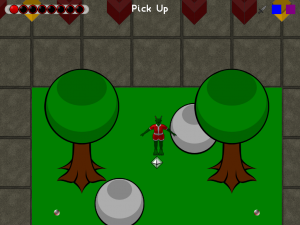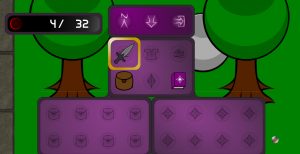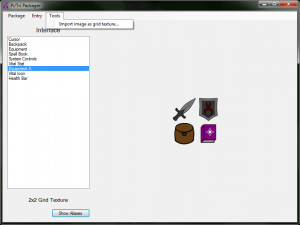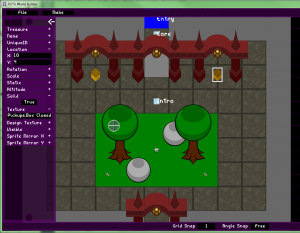After almost a year without programming, I decided to change the type of game I’m going to be working on with the “Pi/Tri Engine”. It will now be a overhead view action-adventure.
 Some major changes to the engine and game I’ve made in the last month:
Some major changes to the engine and game I’ve made in the last month:
- Sprite occlusion testing: when two sprites overlap, this determines which should be drawn in front of the other. (Not as easy as you might initially think!)
- Pseudo-3D capability using altitude and height properties
- New camera with “slack zone” in middle of screen
- 8-directional controls
- Contextual actions based on what the player is facing
- Game pad input
- An input configuration screen
- Pickups and treasure chests
- Ability to transition between maps
- Persistent state tracking (for example, an opened treasure chest will remain open after going to another map)
- Basic status displays (currently for health and equipped items)
- Start of inventory system with menu (shown below)
 And of course, there was a bunch of other changes here and there with the engine to make it easier to work with, but are a bit too technical to mention here.
And of course, there was a bunch of other changes here and there with the engine to make it easier to work with, but are a bit too technical to mention here.
The packager, which combines multiple files into one, has been converted to a regular Windows application, so it doesn’t need to run the full engine. WorldBuilder, the level editor, has various improvements here and there.
WorldBuilder, the level editor, has various improvements here and there.
 At the moment I’m debating whether to convert portions of the editor’s interface into Windows components instead of in-engine GUI code.
At the moment I’m debating whether to convert portions of the editor’s interface into Windows components instead of in-engine GUI code.
One thing I’m not looking forward to doing: making the daunting amount of sprites for characters. I’ve inserted Raeja from Agwilika Rhe to stand in as the player’s character for now, but it’s only 8 standing frames, so no walking or fighting animations yet.
